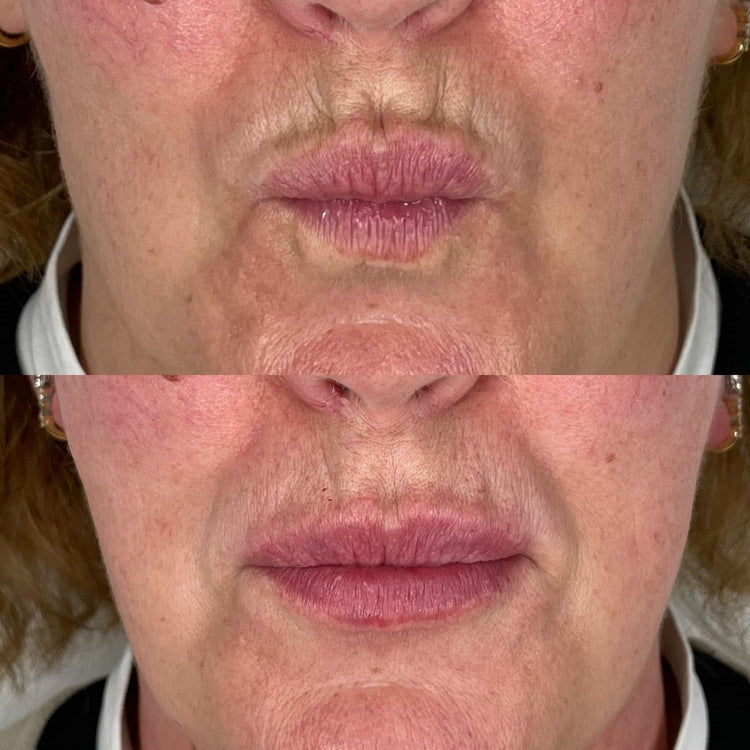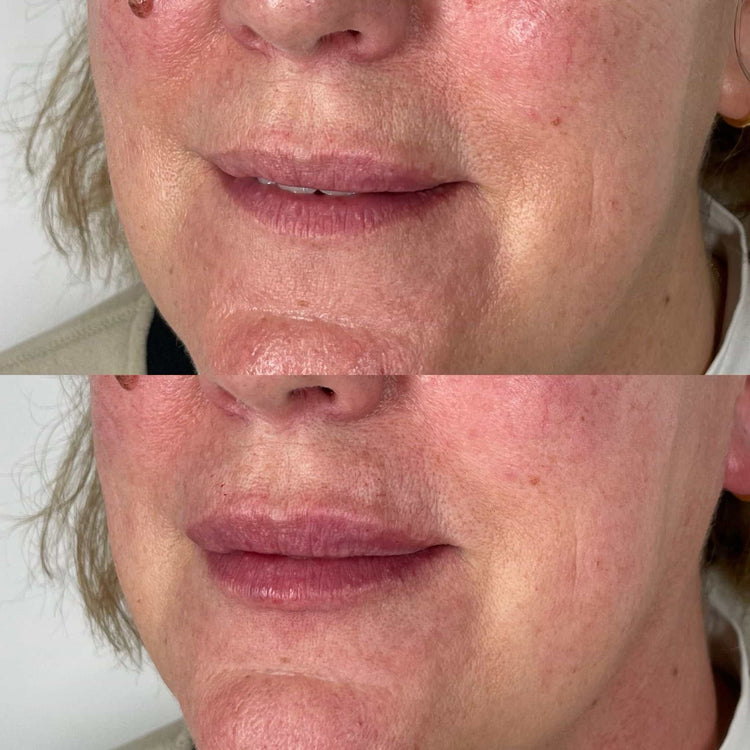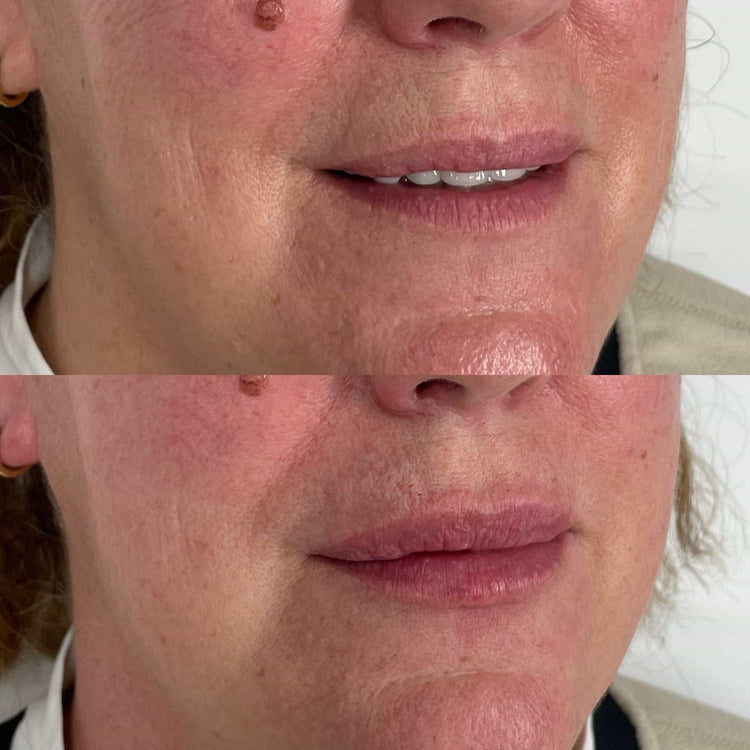Can Lip Fillers Address Upper Lip Wrinkles Effectively
How Lip Fillers Address Upper Lip Wrinkles
Upper lip wrinkles, often referred to as “smoker’s lines” or “vertical lip lines,” are a common concern for many individuals. These fine lines can make lips appear thinner and detract from a youthful appearance. Lip fillers offer a non-surgical solution for addressing these wrinkles by adding volume to the upper lip.
The Science of Lip Fillers
Upper lip wrinkles form due to repeated muscle contractions, sun exposure, and natural aging processes. These contractions cause collagen and elastin fibers in the skin to break down, resulting in thin, visible lines above the lip. Lip fillers, typically made from hyaluronic acid (HA), work by injecting this gel-like substance into the upper lip. Hyaluronic acid is a naturally occurring substance in the body that attracts and holds water, adding volume and plumpness to the lips.
The added volume helps to smooth out the wrinkles and restore a fuller appearance to the upper lip. The filler also plumps up the skin, making it appear smoother and reducing the visibility of fine lines. It’s important to note that lip fillers are not a permanent solution. Over time, the body gradually absorbs HA, so repeat treatments are typically needed to maintain results.
Areas of Treatment for Wrinkles
Lip fillers can effectively address upper lip wrinkles by adding volume to the area. The wrinkles, often called “smoker’s lines” or “vertical lip lines,” form due to repeated muscle contractions, sun exposure, and natural aging, leading to breakdown of collagen and elastin fibers in the skin.
Lip fillers, primarily composed of hyaluronic acid (HA), inject a gel-like substance into the upper lip. Hyaluronic acid is naturally found in the body and attracts water, plumping up the lips and smoothing out wrinkles. This increased volume restores fullness to the upper lip and minimizes the appearance of fine lines.
While lip fillers provide a noticeable improvement, they are not permanent. Over time, the body metabolizes HA, requiring repeat treatments to sustain the results.
Types of Fillers Suitable for Upper Lip Wrinkles

Upper lip wrinkles, also known as “smoker’s lines” or “vertical lip lines,” often make lips appear thinner and detract from a youthful appearance.
These wrinkles form due to repeated muscle contractions, sun exposure, and the natural aging process, which causes collagen and elastin fibers in the skin to break down. Lip fillers offer a non-surgical solution by adding volume to the upper lip.
Hyaluronic acid (HA) is a common ingredient in lip fillers. It’s a naturally occurring substance that attracts and holds water, giving lips a fuller appearance and smoothing out wrinkles. The added volume helps camouflage the wrinkles and restore fullness to the upper lip.
Keep in mind that lip fillers are not a permanent solution. As the body metabolizes HA over time, repeat treatments are needed to maintain the results.
Procedure and Recovery
Lip fillers can effectively address upper lip wrinkles by adding volume to the area. The wrinkles, often called “smoker’s lines” or “vertical lip lines,” form due to repeated muscle contractions, sun exposure, and natural aging, leading to breakdown of collagen and elastin fibers in the skin.
Lip fillers, primarily composed of hyaluronic acid (HA), inject a gel-like substance into the upper lip. Hyaluronic acid is naturally found in the body and attracts water, plumping up the lips and smoothing out wrinkles. This increased volume restores fullness to the upper lip and minimizes the appearance of fine lines.

The procedure itself typically involves a few simple steps: numbing cream is applied to the area, followed by the injection of the filler using a fine needle. The entire process usually takes about 15-20 minutes.
Recovery from lip filler treatment is generally quick and easy. There may be some mild swelling, redness, or bruising around the injection site, which typically subsides within a few days. Patients can usually return to their normal activities immediately after the procedure.
While lip fillers provide a noticeable improvement, they are not permanent. Over time, the body metabolizes HA, requiring repeat treatments to sustain the results. The frequency of these touch-up appointments will vary depending on the individual and the type of filler used.
Expectations and Long-Term Results
Lip fillers can effectively address upper lip wrinkles by adding volume to the area. These wrinkles, often called “smoker’s lines” or “vertical lip lines,” form due to repeated muscle contractions, sun exposure, and natural aging, leading to breakdown of collagen and elastin fibers in the skin.
Lip fillers, primarily composed of hyaluronic acid (HA), inject a gel-like substance into the upper lip. Hyaluronic acid is naturally found in the body and attracts water, plumping up the lips and smoothing out wrinkles. This increased volume restores fullness to the upper lip and minimizes the appearance of fine lines.
It’s important to note that while lip fillers offer a noticeable improvement, they are not permanent. Over time, the body metabolizes HA, requiring repeat treatments to sustain the results. The frequency of these touch-up appointments will vary depending on the individual and the type of filler used.
Potential Risks and Side Effects
Lip fillers can effectively address upper lip wrinkles by adding volume to the area. These wrinkles, often called “smoker’s lines” or “vertical lip lines,” form due to repeated muscle contractions, sun exposure, and natural aging, leading to breakdown of collagen and elastin fibers in the skin.
Lip fillers, primarily composed of hyaluronic acid (HA), inject a gel-like substance into the upper lip. Hyaluronic acid is naturally found in the body and attracts water, plumping up the lips and smoothing out wrinkles. This increased volume restores fullness to the upper lip and minimizes the appearance of fine lines.
While lip fillers can be effective, it’s important to be aware of potential risks and side effects. These may include swelling, bruising, redness, and tenderness around the injection site. In rare cases, more serious complications such as infection, allergic reactions, or asymmetry can occur. Choosing a qualified and experienced practitioner is crucial to minimize these risks.
It’s essential to have a thorough consultation with a medical professional to discuss individual concerns, expectations, and potential risks before undergoing any cosmetic procedure, including lip filler injections.
Alternatives to Lip Fillers
Upper lip wrinkles, often referred to as “smoker’s lines” or “vertical lip lines,” are a common concern for many individuals. These fine lines can make lips appear thinner and detract from a youthful appearance. Lip fillers offer a non-surgical solution for addressing these wrinkles by adding volume to the upper lip.
Upper lip wrinkles form due to repeated muscle contractions, sun exposure, and natural aging processes. These contractions cause collagen and elastin fibers in the skin to break down, resulting in thin, visible lines above the lip. Lip fillers, typically made from hyaluronic acid (HA), work by injecting this gel-like substance into the upper lip. Hyaluronic acid is a naturally occurring substance in the body that attracts and holds water, adding volume and plumpness to the lips.
The added volume helps to smooth out the wrinkles and restore a fuller appearance to the upper lip. The filler also plumps up the skin, making it appear smoother and reducing the visibility of fine lines. It’s important to note that lip fillers are not a permanent solution. Over time, the body gradually absorbs HA, so repeat treatments are typically needed to maintain results.
Alternatives to lip fillers for addressing upper lip wrinkles include:
• Topical Treatments: Retinoids, peptides, and antioxidants found in some creams and serums can help improve skin texture and reduce the appearance of fine lines. However, their effectiveness for treating deeper wrinkles may be limited.

• Chemical Peels: Chemical peels can exfoliate the top layer of skin, revealing smoother skin beneath. This can help minimize the appearance of wrinkles, but multiple treatments are usually needed.
• Laser Treatments: Laser resurfacing techniques can stimulate collagen production and improve skin texture, leading to a reduction in wrinkle depth. However, laser treatments can be more invasive than fillers and may require downtime for recovery.
• Dermal Fillers Other Than HA:** Poly-L-lactic acid (PLLA) is another type of filler that stimulates collagen production over time, providing longer-lasting results.
Considerations Before Getting Lip Fillers
Before deciding to get lip fillers, it’s important to consider several factors.
- Goals: Define what you hope to achieve with lip fillers. Do you want to simply smooth out wrinkles or increase the overall volume of your lips?
- Expectations: Understand that lip fillers are not a permanent solution and require repeat treatments to maintain results.
- Consultation: Schedule a consultation with a qualified and experienced injector to discuss your goals, medical history, and any potential risks or side effects. This is an opportunity to ask questions and ensure you’re comfortable with the procedure.
- Budget: Lip filler treatments can vary in price depending on the amount of filler used and the provider’s fees. Factor in the cost of multiple treatments as lip fillers are not permanent.
- Health Considerations: Discuss any underlying health conditions or medications you take with your injector, as certain medical conditions may make lip fillers unsuitable or require adjustments to the procedure.
- Neck Line Filler Treatment Near Barnes, Surrey - May 9, 2025
- How Long After Lip Filler Can You Go On A Sunbed - May 9, 2025
- Exosome Therapy For Skin Rejuvenation Near Godstone, Surrey - May 9, 2025
